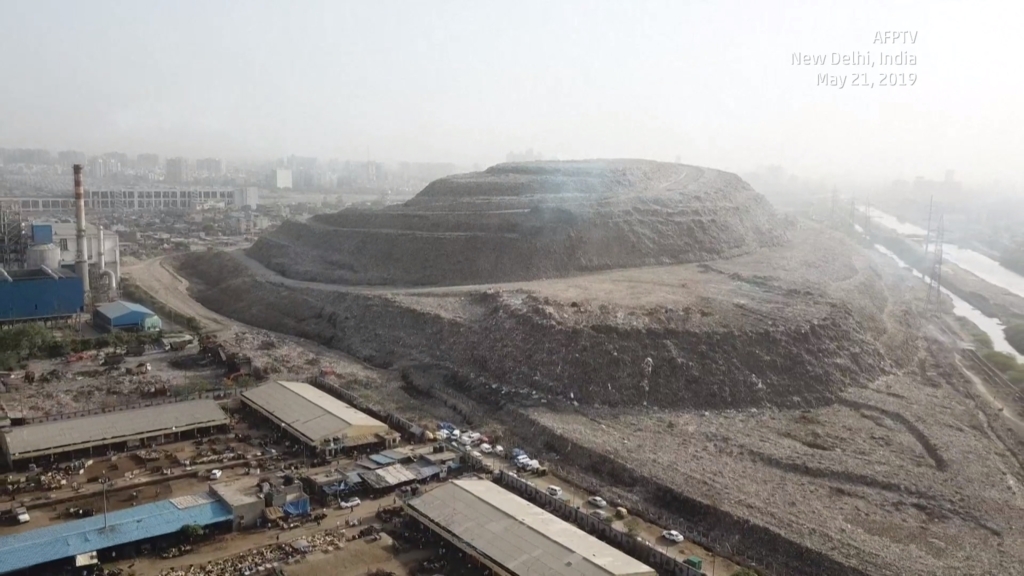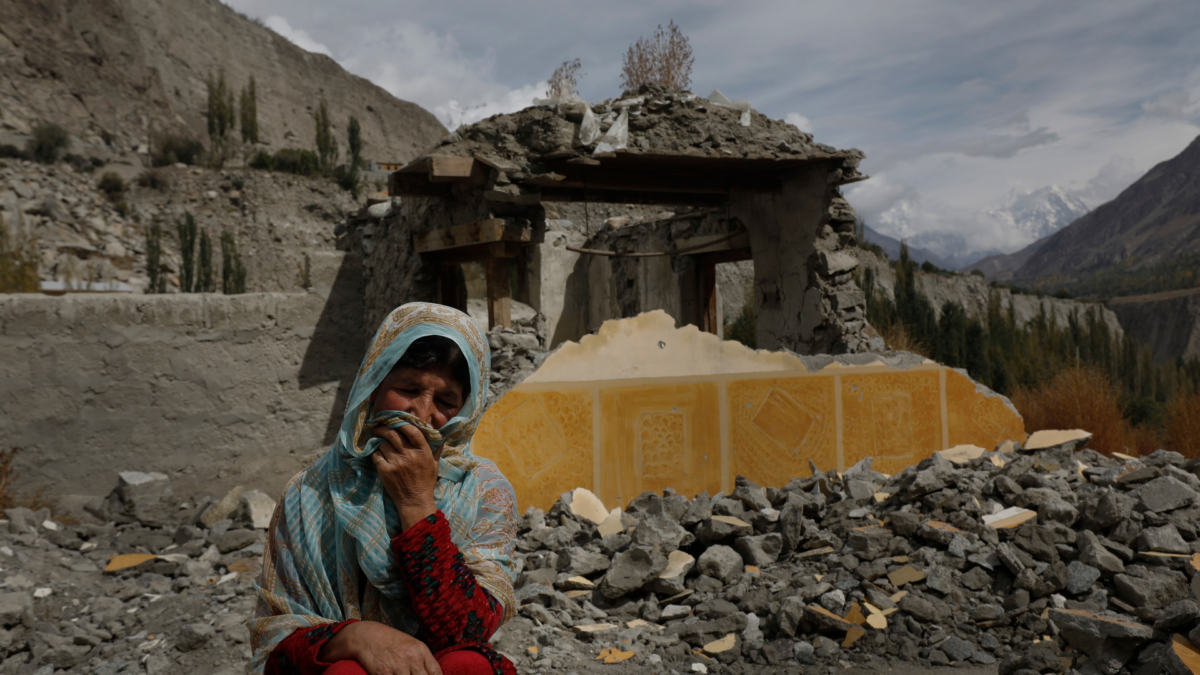Expected to rise higher than Taj Mahal in 2020, Delhi’s Ghazipur landfill is slowly poisoning residents – “The poisonous smell has made our lives hell. People fall sick all the time.”
5 June 2019 (AFP) – India’s tallest rubbish mountain in New Delhi is on course to rise higher than the Taj Mahal in the next year, becoming a fetid symbol for what the UN considers the world’s most polluted capital.
Hawks and other birds of prey hover around the towering Ghazipur landfill on the eastern fringe of New Delhi, stray cows, dogs, and rats wander at will over the huge expanse of smoking filth.
Taking up the area of more than 40 football pitches, Ghazipur rises by nearly 10 metres a year with no end in sight to its foul-smelling growth.
According to East Delhi’s superintendent engineer Arun Kumar, it is already more than 65 metres (213 feet) high.
At its current rate of growth, it will be taller than the iconic Taj in Agra, some 73 metres high, in 2020.
India’s Supreme Court warned last year that red warning lights will soon have to be put on the dump to alert passing jets. It was not meant to be that way. […]
“It all needs to be stopped as the continuous dumping has severely polluted the air and ground water,” said Chitra Mukherjee, head of Chintan, an environment advocacy group.
Residents say the dump often makes breathing virtually impossible.
“The poisonous smell has made our lives hell. People fall sick all the time,” said 45-year-old local resident Puneet Sharma. Protests do not work and now many people are leaving the district.
They say a plant that recycles waste into energy next to the dump increases their misery because the smoke it releases by burning trash is also poisonous.
Local doctor Kumud Gupta said she sees about 70 people, including babies, each day mostly suffering from respiratory and stomach ailments caused by polluted air. […]
And India’s garbage mountains will only get bigger in coming years.
Indian cities are among the world’s largest garbage producers, generating 62 million tonnes of waste annually. By 2030, that could rise to 165 million tonnes, according to government figures.
Chitra, of the Chintan group, said waste has become a huge challenge as India’s growing wealth drives consumerism and the production of extra garbage that the country cannot dispose of properly. [more]



